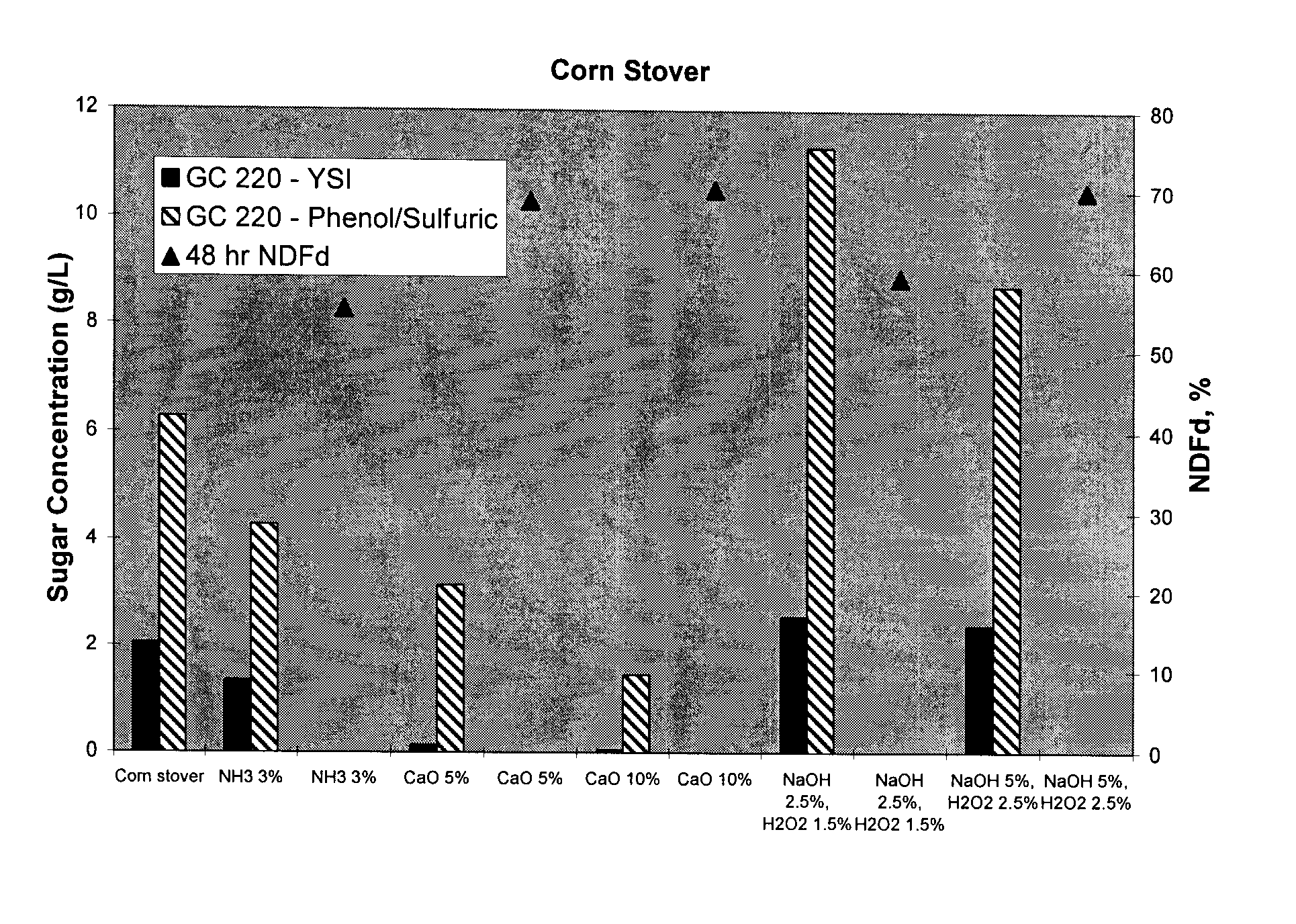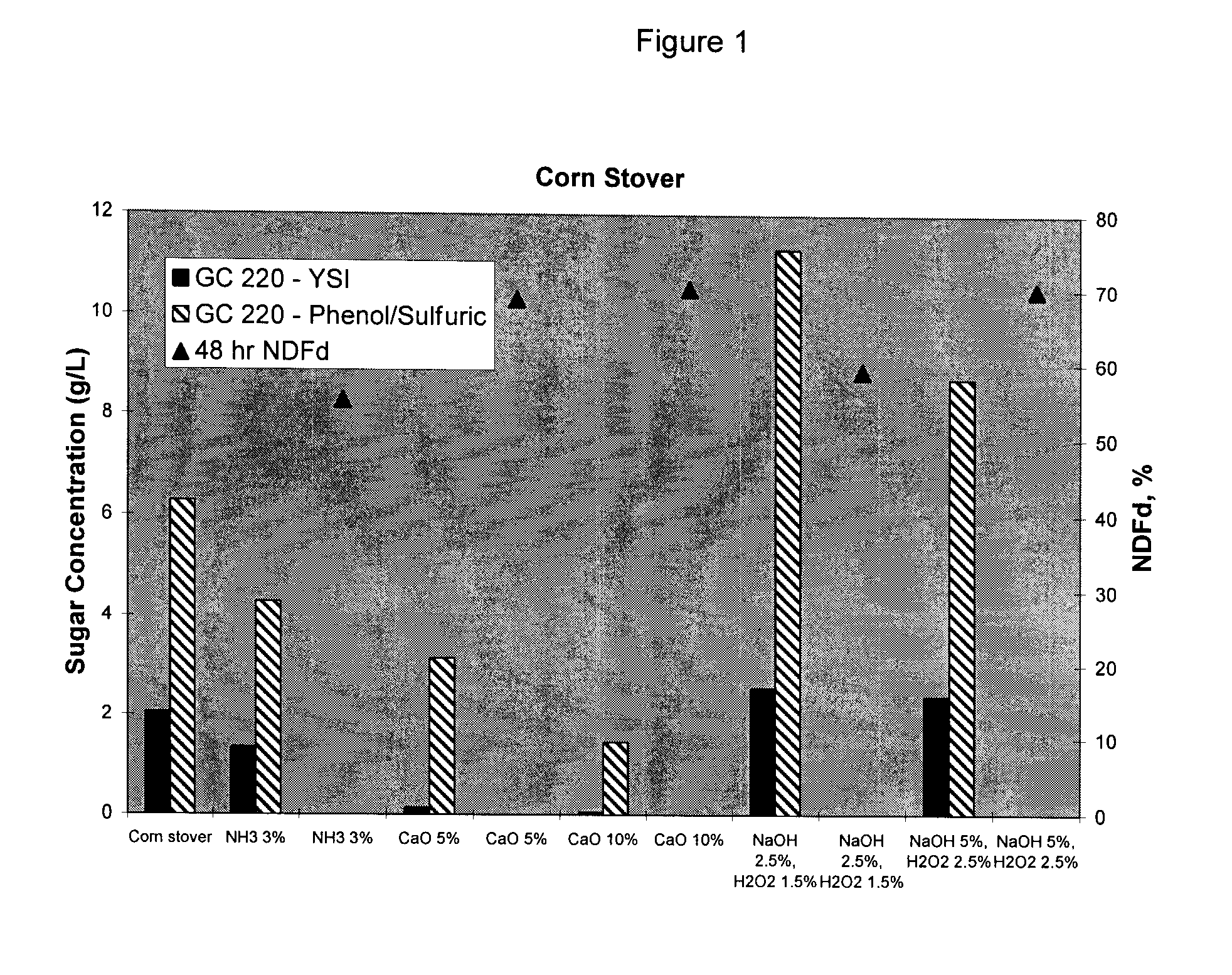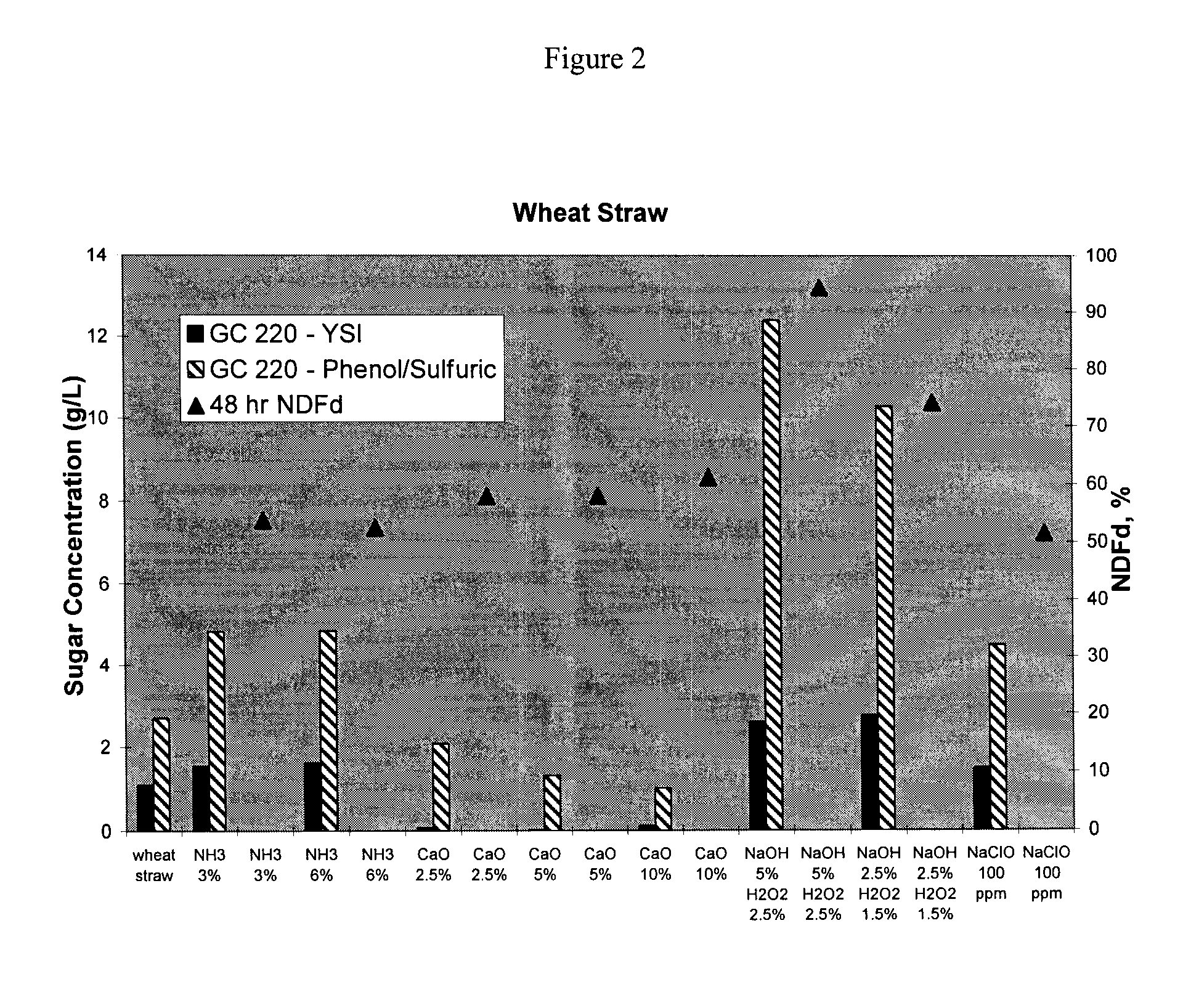Method of Preparing More Digestible Animal Feed
a technology of animal feed and digestible fiber, which is applied in the field of animal feed, can solve the problems of over-saturating the animal feed market, loss of starch energy, and remaining potentially digestible fiber content, and achieve the effect of improving the nutritional quality of the feed
- Summary
- Abstract
- Description
- Claims
- Application Information
AI Technical Summary
Benefits of technology
Problems solved by technology
Method used
Image
Examples
example 1
Treatment of Biomass Fiber Sources
[0057]Wheat straw, rice hulls, rice straw, corn stover and oat hulls were ground in a Fitz Mill Comminutor (Elmhurst, Ill.) to a uniform size through a ½″ screen. Distiller's dried grains with solubles, corn gluten feed, and soy hulls were also tested, but not ground. The ground biomass fibers were treated with thermo chemical treatments to increase biomass digestibility. Two treatments have been conducted, the first treatment with 10 w / w % calcium hydroxide and the second treatment with 2 w / w % ammonium hydroxide.
[0058]In the treatments with 10% calcium hydroxide, 1 kg (as-is basis) of each of the ½″ ground biomass fibers were mixed with 100 grams of calcium hydroxide in a tumbler reactor and heated with direct steam injection to 145° C. for 30 minutes. The biomass fiber mixtures were removed from the reactor and the masses were recorded. In the treatment with 2% ammonium hydroxide, 1 kg (as-is basis) of each of the ½″ ground biomass fibers were mi...
example 2
Enzyme Hydrolysis of Untreated or Pretreated Biomass Fibers
[0062]The thermo chemically pretreated samples from EXAMPLE 1 (10% calcium hydroxide and 2% ammonia), which were treated in a tumbler reactor, were washed with water and dried under vacuum at 80° C. for 72 hrs. The samples were pulverized with a coffee grinder. A Wiley mill was used to further grind the samples into a fine powder through a size 40 mesh. Deep well microplates were used for the enzyme hydrolysis with 50 mg samples in each well. A 2 mL sample of enzyme cocktail (0.1% w / v, enzyme mixture / water) in a 20 mM citrate buffer at pH 5.0 was measured into each well with the fiber samples. The xylanase / β-glucosidase / β-glucanase enzyme mixture included equal portions of NS-50010 (β-glucosidase, Novozymes, Franklinton, N.C.), NS-50029 (β-glucanase, Novozymes), UltraFlo L (β-glucanase, Novozymes), NS-50014 (xylanase, Novozymes), NS-50030 (xylanase, Novozymes), Multifect Xylanase (xylanase, Novozymes) and also one of four ce...
example 3
Evaluation of Enzyme Treatments
[0064]To evaluate the amount of carbohydrate that could be released by the enzyme without feed back inhibition, 250 mg samples were place in a 15 mL tube with 10 mL of enzyme mix (20 mM citrate, pH 5.0, 0.1% cellulase mix). The fiber / enzyme mixtures were placed into a 50° C. water bath and the supernatant was separated every 24 hours and analyzed. Then 8 mL of fresh enzyme mix was added to the biomass samples and the enzyme hydrolysis continued for another 24 hrs. The enzyme hydrolysis was continued for 5 days. Since cellulase is inhibited by the products of the reaction, removing the products from the fiber / enzyme mixture each day was found eliminate the feedback inhibition. The resulting concentrations of glucose and soluble carbohydrate in the products represent the total amount of biomass that is accessible by the enzyme mix after thermo chemical treatment.
[0065]From Table 6, it can be determined that more than 80% of the biomass could be released ...
PUM
| Property | Measurement | Unit |
|---|---|---|
| Temperature | aaaaa | aaaaa |
| Temperature | aaaaa | aaaaa |
| Temperature | aaaaa | aaaaa |
Abstract
Description
Claims
Application Information
 Login to View More
Login to View More - R&D
- Intellectual Property
- Life Sciences
- Materials
- Tech Scout
- Unparalleled Data Quality
- Higher Quality Content
- 60% Fewer Hallucinations
Browse by: Latest US Patents, China's latest patents, Technical Efficacy Thesaurus, Application Domain, Technology Topic, Popular Technical Reports.
© 2025 PatSnap. All rights reserved.Legal|Privacy policy|Modern Slavery Act Transparency Statement|Sitemap|About US| Contact US: help@patsnap.com



